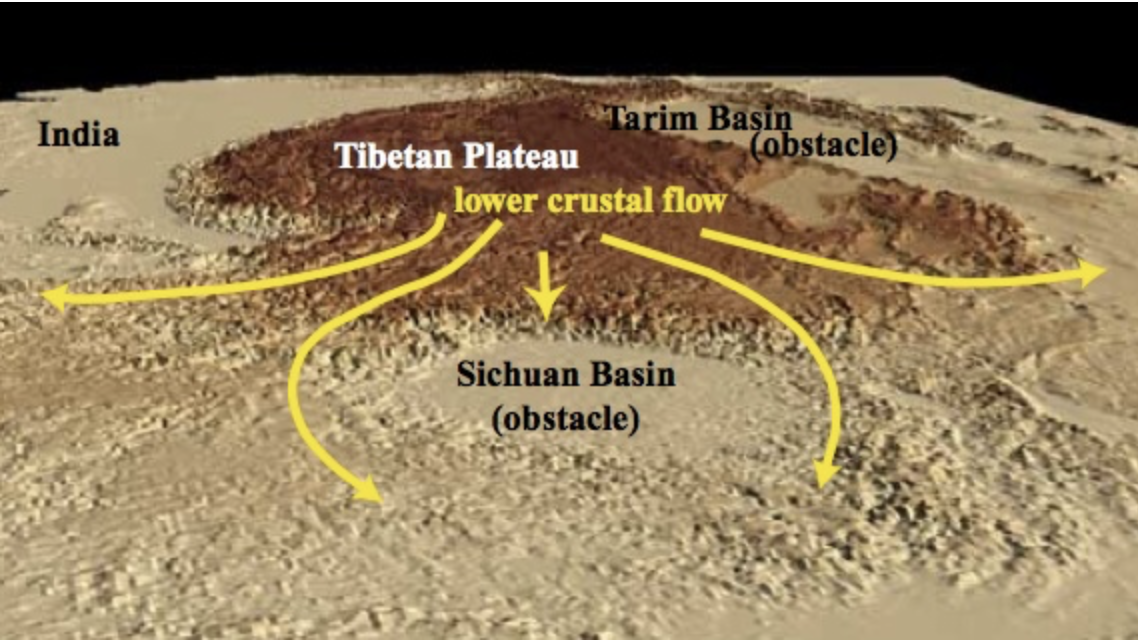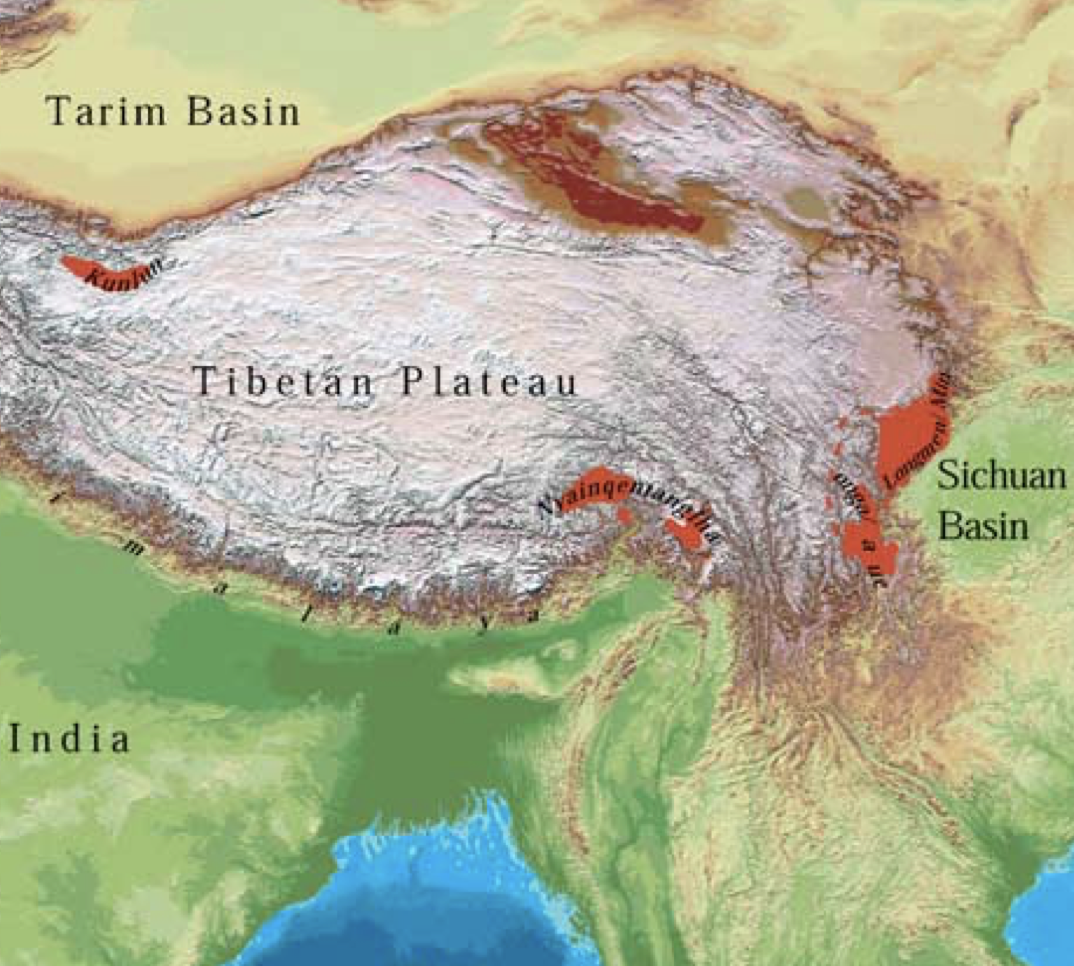
Dynamic stresses developed in the deep crust as a consequence of flow of weak lower crust may explain anomalously high topography and extensional structures localized along orogenic plateau margins. With lubrication equations commonly used to describe viscous flow in a thin-gap geometry, we model dynamic stresses associated with the obstruction of lower crustal channel flow due to rheological heterogeneity. Dynamic stresses that depend on the mean velocity, viscosity and channel thickness are then applied to the base of an elastic upper crust, and the deflection of the elastic layer is computed to yield the predicted dynamic topography. We compare model calculations with observed topography of the eastern Tibetan Plateau margin where we interpret channel flow of the deep crust to be inhibited by the rigid Sichuan Basin. Model results suggest that as much 1500 m of dynamic topography across a region of several tens to a hundred kilometres wide may be produced for lower crustal material with a viscosity of 2 × 10^18 Pa s flowing in a 15 km thick channel around a rigid cylindrical block at an average rate of 80 mm/yr.
See paper: Clark, Bush and Royden (2005)
